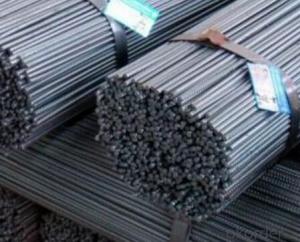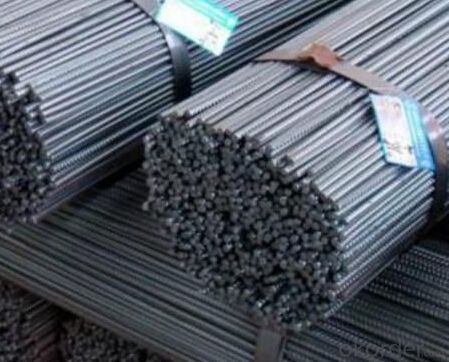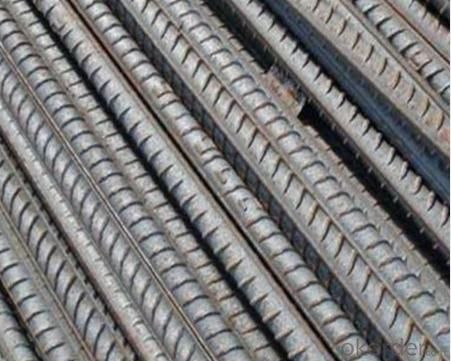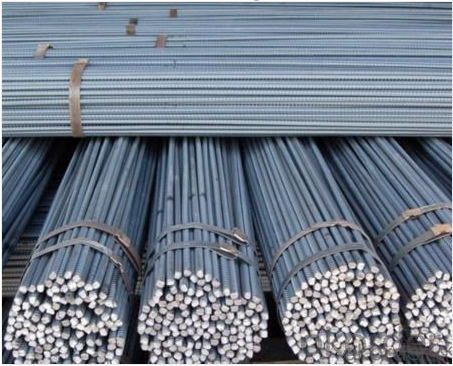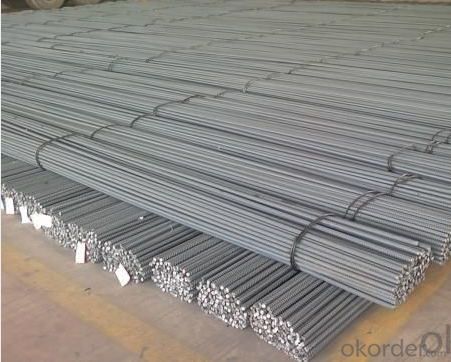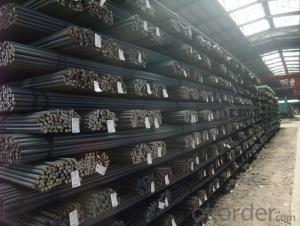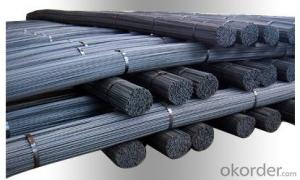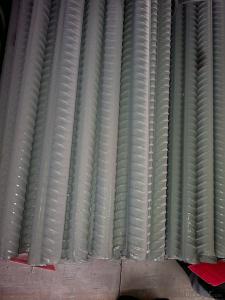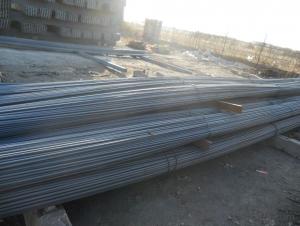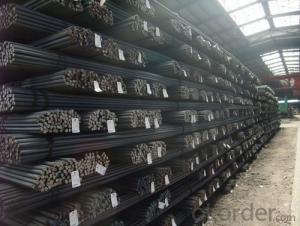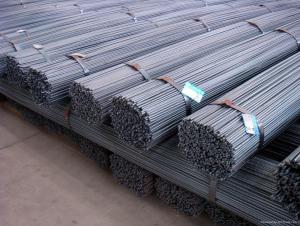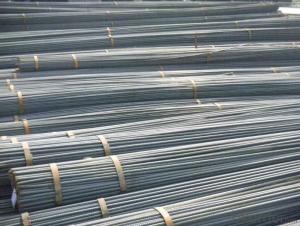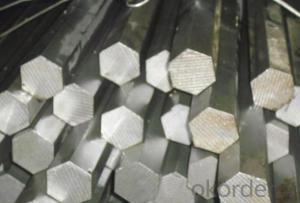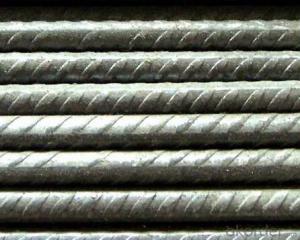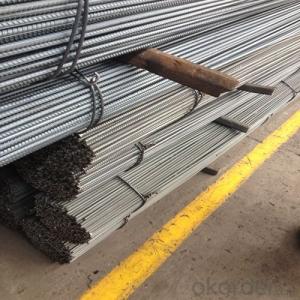Chrome Alloy Deformed Steel Bar of Hot Rolled
- Loading Port:
- Tianjin
- Payment Terms:
- TT or LC
- Min Order Qty:
- 100 m.t.
- Supply Capability:
- 50000 m.t./month
OKorder Service Pledge
OKorder Financial Service
You Might Also Like
Specification
Product Description:
OKorder is offering Chrome Alloy Deformed Steel Bar of Hot Rolled at great prices with worldwide shipping. Our supplier is a world-class manufacturer of steel, with our products utilized the world over. OKorder annually supplies products to European, North American and Asian markets. We provide quotations within 24 hours of receiving an inquiry and guarantee competitive prices.
Product Applications:
Chrome Alloy Deformed Steel Bar of Hot Rolled are ideal for structural applications and are widely used in the construction of buildings and bridges, and the manufacturing, petrochemical, and transportation industries.
Product Advantages:
OKorder's Chrome Alloy Deformed Steel Bar of Hot Rolled are durable, strong, and resist corrosion.
Main Product Features:
· Premium quality
· Prompt delivery & seaworthy packing (30 days after receiving deposit)
· Corrosion resistance
· Can be recycled and reused
· Mill test certification
· Professional Service
· Competitive pricing
Specifications of Chrome Alloy Deformed Steel Bar of Hot Rolled:
Standard | GB | HRB400 | |
Diameter | 6mm,8mm,10mm,12mm,14mm,16mm,18mm,20mm, 22mm,25mm,28mm,32mm,36mm,40mm,50mm | ||
Length | 6M, 9M,12M or as required | ||
Place of origin | Hebei, China mainland | ||
Advantages | exact size, regular package, chemical and mechanical properties are stable. | ||
Type | Hot rolled deformed steel bar | ||
Brand name | DRAGON | ||
Chemical Composition: (Please kindly find our chemistry of our material based on HRB500 as below for your information)
Grade | Technical data of the original chemical composition (%) | ||||||
C | Mn | Si | S | P | V | ||
HRB400 | ≤0.25 | ≤1.60 | ≤0.80 | ≤0.045 | ≤0.045 | 0.04-0.12 | |
Physical capability | |||||||
Yield Strength (N/cm²) | Tensile Strength (N/cm²) | Elongation (%) | |||||
≥400 | ≥570 | ≥14 | |||||
Theoretical weight and section area of each diameter as below for your information:
Diameter(mm) | Section area (mm²) | Mass(kg/m) | Weight of 12m bar(kg) |
6 | 28.27 | 0.222 | 2.664 |
8 | 50.27 | 0.395 | 4.74 |
10 | 78.54 | 0.617 | 7.404 |
12 | 113.1 | 0.888 | 10.656 |
14 | 153.9 | 1.21 | 14.52 |
16 | 201.1 | 1.58 | 18.96 |
18 | 254.5 | 2.00 | 24 |
20 | 314.2 | 2.47 | 29.64 |
22 | 380.1 | 2.98 | 35.76 |
25 | 490.9 | 3.85 | 46.2 |
28 | 615.8 | 4.83 | 57.96 |
32 | 804.2 | 6.31 | 75.72 |
36 | 1018 | 7.99 | 98.88 |
40 | 1257 | 9.87 | 118.44 |
50 | 1964 | 15.42 | 185.04 |
Usage and Applications of Chrome Alloy Deformed Steel Bar of Hot Rolled:
Deformed bar is widely used in buildings, bridges, roads and other engineering construction. Big to highways, railways, bridges, culverts, tunnels, public facilities such as flood control, dam, small to housing construction, beam, column, wall and the foundation of the plate, deformed bar is an integral structure material. With the development of world economy and the vigorous development of infrastructure construction, real estate, the demand for deformed bar will be larger and larger..
Packaging & Delivery of Chrome Alloy Deformed Steel Bar of Hot Rolled:
Packaging Detail: products are packed in bundle and then shipped by container or bulk vessel, deformed bar is usually naked strapping delivery, when storing, please pay attention to moisture proof. The performance of rust will produce adverse effect.
Each bundle weight: 2-3MT, or as required
Payment term: TT or L/C
Delivery Detail: within 45 days after received advanced payment or LC.
Label: to be specified by customer, generally, each bundle has 1-2 labels
Trade terms: FOB, CFR, CIF
FAQ:
Q1: Why buy Materials & Equipment from OKorder.com?
A1: All products offered byOKorder.com are carefully selected from China's most reliable manufacturing enterprises. Through its ISO certifications, OKorder.com adheres to the highest standards and a commitment to supply chain safety and customer satisfaction.
Q2: How do we guarantee the quality of our products?
A2: We have established an advanced quality management system which conducts strict quality tests at every step, from raw materials to the final product. At the same time, we provide extensive follow-up service assurances as required.
Q3: How soon can we receive the product after purchase?
A3: Within three days of placing an order, we will begin production. The specific shipping date is dependent upon international and government factors, but is typically 7 to 10 workdays.
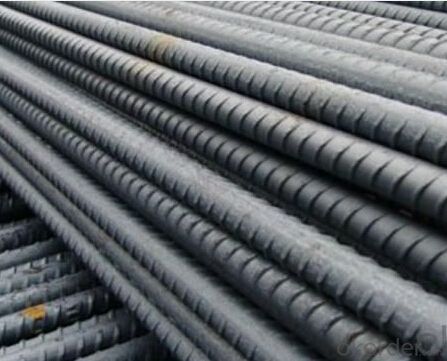
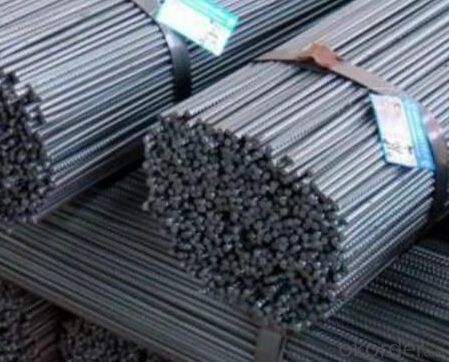
- Q: What are the benefits of using stainless steel rebars?
- Some benefits of using stainless steel rebars include their high corrosion resistance, durability, and strength. Stainless steel rebars do not rust or corrode like traditional steel rebars, making them ideal for construction projects in areas with high humidity or exposure to corrosive elements. They also have a longer lifespan, reducing the need for frequent replacements and maintenance. Additionally, stainless steel rebars offer better structural integrity and can withstand higher loads, ensuring the longevity and safety of the structures they reinforce.
- Q: Can steel rebars be welded together?
- Yes, steel rebars can be welded together using various welding processes such as shielded metal arc welding (SMAW), gas metal arc welding (GMAW), or flux-cored arc welding (FCAW). Welding rebars together is a common practice in construction to create a structural joint that ensures strength and stability in reinforced concrete structures.
- Q: What are the factors that determine the strength of steel rebars?
- The strength of steel rebars is determined by several factors. Firstly, the composition of the steel used in the manufacture of rebars plays a crucial role. The presence of certain elements, such as carbon, manganese, and silicon, can significantly affect the strength of the steel. These elements enhance the steel's ability to resist tension and provide structural stability, ultimately determining the strength of the rebars. Secondly, the manufacturing process of the rebars has an impact on their strength. The steel is typically heated and then rapidly cooled, a process known as quenching and tempering, which helps in achieving the desired strength. The precise temperature and duration of this process can influence the rebars' strength, as it affects the grain structure and chemical properties of the steel. Thirdly, the size and shape of the rebars also play a role in determining their strength. The diameter and length of the rebar affect its load-bearing capacity. Thicker and longer rebars generally have higher strength as they can withstand greater stress and distribute it more effectively. Furthermore, the presence of any impurities or defects in the steel can weaken the rebars. These defects can include cracks, voids, or inclusions, which can compromise the structural integrity of the rebar and reduce its strength. Lastly, the environment and conditions in which the rebars will be used should also be considered. Factors such as temperature, humidity, and exposure to corrosive substances can impact the rebars' strength over time. Proper precautions, such as using corrosion-resistant coatings or stainless steel rebars, should be taken to ensure the longevity and strength of the rebars in such environments. In conclusion, the strength of steel rebars is determined by the composition of the steel, the manufacturing process, the size and shape of the rebars, the presence of defects, and the environmental conditions in which they will be used. Considering these factors is crucial for ensuring the durability and reliability of steel rebars in construction applications.
- Q: How are steel rebars priced in the market?
- Steel rebars are typically priced in the market based on factors such as the current demand and supply conditions, raw material costs, production and manufacturing expenses, transportation costs, and market competition. Additionally, market fluctuations, trade policies, and global economic conditions can also influence the pricing of steel rebars.
- Q: What is the role of steel rebars in preventing concrete shrinkage?
- Steel rebars play a crucial role in preventing concrete shrinkage by providing reinforcement and support to the concrete structure. The rebars, which are typically embedded within the concrete, help to distribute the tensile forces that occur during the drying and shrinking process of the concrete. This reinforcement helps to minimize and control the extent of shrinkage cracks, ensuring the overall stability, durability, and longevity of the concrete structure.
- Q: How are steel rebars used in bridge construction?
- Steel rebars are used in bridge construction to reinforce and strengthen the concrete structures. These rebars are embedded within the concrete to enhance its tensile strength, thereby preventing cracks and ensuring the bridge's overall stability and durability.
- Q: What is the standard size of a steel rebar?
- The standard size of a steel rebar can vary depending on the specific application and project requirements. However, in construction and civil engineering, the most commonly used standard sizes for steel rebars are typically 10mm, 12mm, 16mm, 20mm, 25mm, and 32mm in diameter. These sizes are widely available and are used in various structural elements such as beams, columns, and slabs. Additionally, the length of a steel rebar can vary, typically ranging from 6 meters to 12 meters, depending on the project specifications. It is important to consult the project engineer or refer to the relevant building codes and standards to determine the appropriate size of steel rebar for a specific construction project.
- Q: Can steel rebars be used in the construction of high-speed rail tracks?
- Yes, steel rebars can be used in the construction of high-speed rail tracks. Steel rebars are commonly used as reinforcement in concrete structures, including railway tracks. They provide added strength and durability to the tracks, ensuring they can withstand the high speeds and heavy loads associated with high-speed rail systems.
- Q: How do steel rebars affect the thermal conductivity of concrete structures?
- Steel rebars have a significant impact on the thermal conductivity of concrete structures. The inclusion of steel rebars in concrete increases the overall thermal conductivity of the structure. This is because steel has a much higher thermal conductivity than concrete. Consequently, heat transfer through the concrete is facilitated by the presence of steel rebars, leading to a higher overall thermal conductivity of the structure.
- Q: What are the different sizes of steel rebars available?
- The different sizes of steel rebars available vary depending on the specific needs and requirements of a construction project. Common sizes include #3 (3/8 inch), #4 (1/2 inch), #5 (5/8 inch), #6 (3/4 inch), #7 (7/8 inch), and #8 (1 inch). However, rebars can be manufactured in other sizes as well to cater to different structural applications.
Send your message to us
Chrome Alloy Deformed Steel Bar of Hot Rolled
- Loading Port:
- Tianjin
- Payment Terms:
- TT or LC
- Min Order Qty:
- 100 m.t.
- Supply Capability:
- 50000 m.t./month
OKorder Service Pledge
OKorder Financial Service
Similar products
Hot products
Hot Searches
Related keywords
